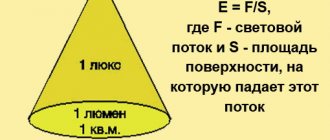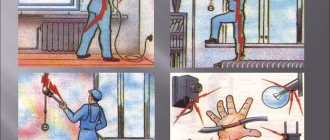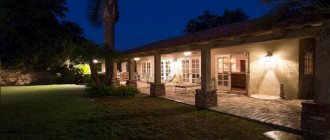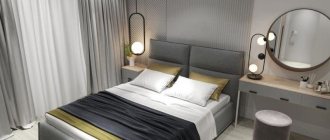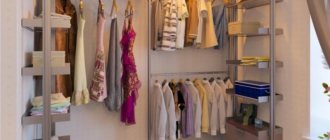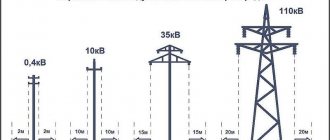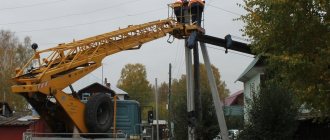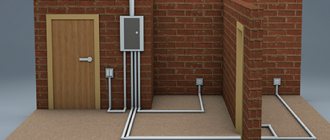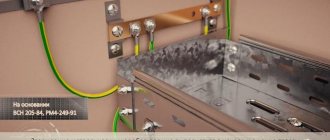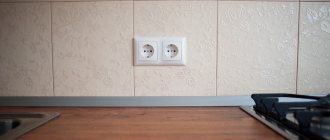Basic light requirements
An adult spends about a third of his time at work. He should be comfortable, convenient, during this time he should not overwork and worsen his health. The worker must have safe working conditions, and light also affects this.
The basic requirements for workplace lighting are as follows:
- Optimal brightness that does not affect vision. The light should not be too dim so as not to strain your eyesight, but it should not blind your eyes.
- Illumination uniformity. There should not be many shadows in the workplace. If the main light from ceiling lamps is not enough, then use table lamps, floor lamps or other lighting fixtures.
- Possibility to individually adjust the level of lighting at the workplace.
- Safety for the worker and the production process.
Light happens:
- natural;
- artificial.
A combination of natural sunlight and artificial light (from lamps) is considered optimal for lighting. This method of lighting offices is called combined or mixed.
Legislation
There are legislative acts that specify standards for lighting the work area. Thus, the requirements for workplace lighting can be found in:
- in GOST 55710-2013, SP 52.13330.2016 (updated edition of SNiP 23-05-95) - these standards are also used in the design of premises;
- SanPiN 2.2.1/2.1.1.1278-03 applies to the organization of workplaces in already constructed buildings. It is important to know that regulatory inspections are carried out for compliance with SanPiN.
SNIP
Building codes and rules for lighting design are a set of regulatory documents in the field of construction, adopted by executive authorities and containing mandatory requirements, which include 4 parts:
- General provisions.
- Design standards.
- Rules for the implementation and acceptance of work.
- Estimated rules and regulations.
SanPiN
Sanitary rules and regulations cover a huge area of influence. The requirements of SanPin must be taken into account when developing SNiP, technical and regulatory documentation and agreed with the State Sanitary and Epidemiological Service of the Russian Federation. SanPin applies both to existing production facilities and to the design and operation of enterprises and buildings under construction.
Sanitary norms and rules impose serious requirements for ensuring human living conditions and establish a standard for the safety of environmental factors. These requirements must be taken into account when developing SNiP, regulatory and technical acts, and also be agreed upon with the State Sanitary and Epidemiological Supervision of the Russian Federation.
Documentary basis
The calculation of illumination standards is regulated by several legal acts. The most important document is SNiP. There are also SanPiN, MGSN (Moscow City Building Standards), as well as a large number of regional (for each subject of the Russian Federation) and industry documents, acts, etc.
Illumination standards - what are they?
Illumination regulation is an important issue that is resolved by specialized government bodies. The developed standards allow us to assess the sufficiency of light in a room or on the territory of a facility. Illumination is measured in lux, and its value depends on the characteristics of the room/object. 1 lux corresponds to the illumination of 1 square meter of area with a luminous flux with an intensity of 1 lumen.
Illumination standards are always taken into account when designing buildings, structures, production and infrastructure facilities. Their values are indicated in guidelines approved by the government of the Russian Federation and which serve as the legal basis for construction and installation work.
Illumination norms and standards
It is not the employee himself or his employer who determines what the correct lighting for the workplace should be. The standards are regulated by regulations, which set the permissible brightness level in Lux.
Regulations:
- SNiP - building codes and rules for lighting design;
- SanPiN - sanitary rules and regulations, which include all occupational hygiene, including light hygiene;
- GOST R 55710-2013 - regulates lighting standards inside buildings.
In production, labor safety must be monitored by a certain specialist; sometimes, if the organization is large, an entire department is created for this purpose. The responsibilities of this employee include, among other things, monitoring compliance with workplace lighting rules.
The level of light varies depending on the type of work being performed. Types of production are divided into high-precision, medium-precision, and low-precision labor. The lighting used in high-precision manufacturing workplaces differs from that in low-precision workplaces. Below are the brightness standards depending on the required accuracy:
- highest accuracy - 5000 Lux;
- very high - 4000 Lux;
- high - 2000 Lux;
- medium - 750 Lux;
- small - 400 Lux;
- rough - 200 Lx.
The table shows lighting standards depending on the type of office space:
| Room | Standards, according to SNiP |
| Office with computers | 200-300 Lux |
| Server room | 400 Lux |
| Operations or cash room | 400 Lux |
| Large open-plan office | 400 Lux |
| Visitor's room | 300 Lx |
| Cabinet for drawing work | 500 Lux |
| Photocopying room | 300 Lx |
| Conference hall | 200 Lx |
| Flights of stairs and escalators | 50-100 Lux |
| Hall, corridor, vestibule | 50-75 Lux |
| Archive | 75 Lux |
| Pantry | 50 Lx |
Reflectance coefficients of surrounding surfaces
Reflection from surfaces is an important indicator when organizing a workplace. Surface reflectance refers to the ability of a substrate to reflect incident light. It is equal to the ratio of light reflected from the surface to the total incident luminous flux. Such coefficients have been calculated for a long time (depending on the material, the numbers may vary):
- gender - 0.2-0.4;
- walls - 0.5-0.8;
- ceiling - 0.7-0.9;
- table, work surface - 0.2-0.7.
Industry standards for artificial lighting
In addition to SNiP information, which is general, there are a number of industry documents developed by special institutes. They are established depending on the type of industry after analyzing its specifics, and only then become recommendations. In the absence of specific industry standards, you will have to use general ones.
All industry standards depend on the accuracy of visual work, which is divided into 7 categories depending on the size of the work object and the complexity of the work. For example, precision work (grades 1-4) implies the presence of an object measuring from 0.15 mm (highest accuracy) to 5 mm (average accuracy). The fifth category (low accuracy) may include work with luminous objects.
When dividing work by complexity within a category, the background color is taken into account, because it affects the reflection coefficient (for example, black color has the lowest reflection coefficient). The standards must take into account the following factors:
- duration of work;
- labor intensity;
- degree of task resolution - discrimination or search;
- number of objects in the field of view;
- age of employees;
- qualifications of employees.
Visual comfort factors
When decorating the interior of office premises, it is important to take into account the color scheme of the walls, because it affects people differently. It is best to choose pastel colors, as well as greenish and yellow shades that are pleasing to the eye.
There are other factors of visual comfort:
- suitable brightness;
- homogeneity of light;
- no glare or flicker;
- desired contrast.
Glare, or strong glare, is bad for the eyes - the property of bright surfaces to worsen contrast and disrupt visual comfort. Light fluctuations also cause eye fatigue; they greatly reduce labor productivity, so they are also unacceptable.
Workplace lighting - definition and impact on people
Illumination is understood as a luminous value equal to the ratio of the light flux incident on a certain area of the surface to the area of this area.
Properly organized lighting is especially important for production facilities, offices, warehouses, and workshops. Excessive and insufficient light availability has a negative effect on employees.
According to regulations, in buildings and in production, the distribution of light must be optimal for effective performance of duties.
The efficiency of workers depends on proper lighting, because light affects all components of this indicator:
- energy, endurance, performance;
- work motivation;
- health, good physical well-being.
With a lack of light, people's vision will inevitably decline, chronic overwork and fatigue will occur, and they will lose interest in the results of their work. With too much light, the eyes also get tired and dizziness occurs, especially when subsequently entering a room with less bright lamps. The result is irritability, bad mood, decreased performance, and inattentiveness of employees.
The need to measure illumination
According to hygienic standards, the main indicator of illumination of a space is measured in lux (Lx). In some standards, the unit of measurement is Lumen/square meter of area, which is essentially equal to lux.
Why is artificial lighting measured? For example, office workers who work at a computer every day have a constantly increased visual load. If the light in the office is uneven and falls on the table from the wrong direction, health problems will arise. According to standards, the luminous flux on a PC table must be 300-500 Lux. Carrying out the necessary measurements will allow you to quickly identify deviations in lighting.
How is illumination measured?
Calculation of the illumination norm is carried out in lux (lx). Lux is 1 lumen per m², therefore, in the developed rules, the standard of illumination in industrial premises is presented in this unit of measurement.
For example, many employees use PCs when performing their professional duties. A room that is not properly equipped with lighting devices may experience:
- drop in visual acuity;
- eye fatigue;
- itching and dry eyes;
- general psycho-emotional irritation;
- pathological phenomena in the nervous system (for example, the appearance of insomnia).
Following the rules will help you avoid all this:
- in an office equipped with computers, uniform lighting is necessary;
- the light from the window should fall on the worker’s workplace from the left side;
- on the employee’s desk, the luminous flux should be from 300 to 500 lux.
What are the requirements for lighting rooms with PCs from artificial sources? They have to:
- do not create glare on the monitor screen;
- give a light flux not lower than the specified norm of 300 lux;
- their level of gloss should tend to zero. To do this, it is necessary to correctly position the lamps relative to the working surface;
- The brightness of the elements included in the lighting fixtures should not exceed the limit of 200 cd/m².
By following the above requirements, you can create good conditions for working on a PC without harming your eyes. The calculation is made based on determining the actual illumination of the work area with available lamps. In this case, the actual illumination is compared with its standard value.
Light control
To regulate this issue, building codes and regulations (SNiP) are used - a set of documents that contains all the necessary data and includes four parts:
- general provisions;
- design standards;
- rules of conduct and acceptance;
- estimate rules and regulations.
There are also a number of epidemiological documents - SanPiN, which also regulate the issue of types of lighting, standards and basic requirements for organizing the workplace. SanPiN requirements are also taken into account when developing SNiP and technical documentation. SanPiN applies to both existing industrial and office premises, as well as those being designed or under construction.
Documents on workplace lighting
What lighting should be like in the workplace is reflected by SNiP 05/23/95. There are all the requirements for lighting: natural, artificial. The federal document must be taken into account for old, newly created jobs when redeveloping them.
Another regulatory document on lighting is SanPiN 2.2.4.3359-16. Here are the basic hygiene requirements for business entities. The legislative act also contains requirements for light sources in schools and kindergartens, because the health of schoolchildren and young children depends on lighting.
Various industry standards have also been developed, but they all take into account the provisions of the above documents. Some enterprises additionally use the European Union standard EN 12464, which provides for the use of slightly more intense light fluxes.
Large fluorescent light bulbs
Large ones include fluorescent tubes 47cm and 120cm long from ceiling and wall lamps. They are designated T5 and T8, their base is G13, G23. The most popular are 18 W and 36 W
When replacing with LED tubes, keep in mind that they may have a matte diffuser. The manufacturer can easily indicate the light flux without this diffuser, on which 10-20% is lost. The number of phosphor layers on the walls also affects the color temperature.
Table for simple
| Luminescent | LED analogue, Watt | Lumens |
| 10 W | 5 | 400 |
| 15 W | 8 | 700 |
| 16 W | 9 | 800 |
| 18 W | 11 | 900 |
| 23 W | 15 | 1350 |
| 30 W | 20 | 1800 |
| 36 W | 23 | 2150 |
| 38 W | 25 | 2300 |
| 58W | 35 | 3350 |
| Information obtained from the official Osram website for the Standard series |
In addition to inexpensive budget models, expensive, improved ones are also produced. The price differs significantly, but it pays off with increased light output, which is 50% more. The light output of improved 58W models is the same as that of LEDs, 90 lm/W. The disadvantage is the high reactive energy consumption, which depends on the power factor indicator.
Table for improved
| Luminescent | LED analogue, Watt | Lumens |
| 10 W | 7 | 650 |
| 15 W | 10 | 950 |
| 16 W | 14 | 1250 |
| 18 W | 15 | 1350 |
| 23 W | 20 | 1900 |
| 30 W | 25 | 2400 |
| 36 W | 35 | 3350 |
| 38 W | 35 | 3300 |
| 58 W | 55 | 5200 |
| Information obtained from the official Osram website for the Standard series |
The typical service life is 15-20 thousand hours, but there are models with a service life of 75,000 - 90,000 hours, for example from the Osram LUMILUX XXT T8 series.
For Armstrong ceiling lights, energy consumption and luminous flux are usually indicated, for example 36W and 2800lm. The manufacturer is silent that 2800lm is the light flux of lamps without the lamp itself. After all, in it one side of the tube shines into the body, the other into the room. To prevent light from being lost on the wall, a reflector is installed. But it is located close to the tube, so the tube body obscures 15 to 20% of the reflected light. Therefore, the actual number of lumens for the Armstrong lamp is lower; instead of 2800lm there will be only 2200lm.
T5 T8 LED tubes do not have this problem and no reflector is required. LEDs are installed on one side and shine only towards the room.
Types of lighting
There are different classifications of lighting. So, according to localization, it can be of the following types:
- General. Assumes uniform lighting of the room without the presence of dark or lighter areas. The presence of only such lighting is usually observed in areas where the work process is carried out part-time.
- Local. Local lighting helps to additionally illuminate certain work areas: a computer or school desk, equipment and machines. It involves the installation of various lighting fixtures in close proximity to the workplace.
According to the standards, the use of exclusively local lighting is unacceptable, since there will inevitably be differences in light in the room - from deep darkness to bright light. This will cause vision problems for workers. Based on light sources, lighting is also divided into several types.
Natural
Natural lighting is created by the forces of nature: direct sunlight, as well as diffuse (reflected) light from the sky. The lack of natural light is unfavorable for a person, because it is to it that the eyes are best adapted. Such light depends on the time of year and period of day, this is its main drawback. But the quality and volume of incoming natural light also depends on the design of the building, the number and size of windows.
Natural light is measured by KEO - natural light coefficient. It is equal to the ratio of illumination in a building and illumination in an open area in clear weather. There are more KEOs in the southern regions than in the northern ones.
There is even a special light climate map, consisting of 6 zones, according to which windows in buildings should be designed. Natural light is divided into the following types:
- upper (light penetrates through openings in areas with differences in height of the house);
- side (light enters through the windows of the external walls);
- combined (combination of the two previous types).
Artificial
Without artificial lighting at twilight, on a cloudy day or in winter, when it gets dark early, normal work processes are impossible. Additional light sources include lamps, lamps, floor lamps, sconces and other electrical appliances. Usually, halogen and LED lamps are purchased for offices and production. Conventional incandescent light bulbs are now rarely used, since they waste a lot of electricity and quickly break down.
Most often, lighting is mixed, when natural is combined with artificial. The latter is also divided into the following types:
- Working. Regular lighting, which is used daily by employees, helps ensure the workflow.
- Emergency. It turns on only in case of an accident, in an emergency situation, when the main lighting is turned off.
- Evacuation. It is used to illuminate evacuation routes for people in emergencies; it is usually not as powerful as a working one.
- Security. Used by security personnel, it is not present at all enterprises, but when necessary. Not standardized by intensity.
- On duty. Remains on even after the end of the work process (for example, small lighting of corridors in large buildings).
Hybrid lighting
Hybrid systems are systems that include natural and artificial lighting. They are suitable for cases in which sunlight alone is not enough to create an adequate level of illumination. When determining the luminous flux value, natural lighting is not taken into account - calculations are performed only for electrical sources.
The need for hybrid lighting appears if the KEO value is below the permissible value - 1 or 1.2%. If this indicator, depending on shading, type of glass and window width, does not meet the norm, artificial lighting is installed in the workplace along with natural lighting. Light sources are installed only in those areas where the CEC is below normal.
Consequences of improper lighting
Failure to comply with the lighting requirements for workplaces at any enterprise is fraught with a decrease in overall performance. In addition, the staff's vision becomes tired, a direct threat to health arises, and even the development of myopia is possible. At enterprises where management is negligent in complying with the above requirements, the risk of occupational injuries increases, and the number of defects may also increase. It is not uncommon for staff turnover to occur. After all, many people are attentive to their own health, and sometimes vision turns out to be more valuable than a position or having a job.
Requirements for workplace lighting must, of course, be strictly observed. After all, people, as a rule, spend most of their lives at work or in enclosed spaces, where improper lighting can undermine their health.
The presence of artificial light is a mandatory measure that promotes safety and productivity. The choice of the method of arranging lighting fixtures and their type help relieve visual stress. The right approach means satisfied employees and quality products.
Instruments for measuring light levels
The device that measures light levels is called a lux meter. It can be analog or digital.
The luminous flux falls on the photocell, releasing electrons, which causes the conduction of current. Its value, which is reflected on the scale (graduated in lux), is proportional to the illumination level of the photocell. If the lux meter is analog, the result is visible by the deflection of the arrow.
In digital lux meters, the result is visible on the LCD display. Most of them have a separate part that measures the indicator, connected to the display using a wire, and the measurement limits are adjustable. This design makes it possible to measure illumination in places inaccessible to an analog lux meter.
Important! The error of any type of lux meter should not exceed 10% (according to GOST).
Photographers use more precise equipment:
- exposure meters (measure exposure illumination);
- flash meters (used together with photo flashes);
- photometers (combines the characteristics of a flash meter and an exposure meter).
Surface reflectance
Comfortable conditions for office employees also depend on the ability of surfaces to reflect light. Here they take into account the glare that comes from not only lamps, but also furniture, as well as decoration.
The following reflection coefficients are considered optimal for different surfaces:
- walls – 0.3-0.5;
- gender – 0.1-0.4;
- ceiling – 0.6-0.8;
- working surfaces – 0.2-0.7.
According to international standards, the degree of gloss of surfaces is reflected by the UGRL discomfort index, which can range from 13 to 28 (measured in increments of 3).
Sanitary and hygienic standards for office lighting
Lighting standards in office premises are also presented in SaNPiN 2.21/2.1.1.1278-03. Recommended values can be found in Table 2 of this document.
It provides the following indicators for offices:
- Natural lighting (KEO, en) is 3.0 with overhead or combined lighting and 1.0 with side lighting.
- The KEO indicator for combined lighting is 1.8 for combined or overhead lighting and 0.6 for side lighting.
- Artificial illumination is 400 lux for combined lighting and 300 lux for general lighting.
- The discomfort index M cannot exceed level 40.
- The permissible light pulsation coefficient is no more than 15%.
The coefficient of natural illumination (KEO), measured in%, shows the ratio of the amount of natural light indoors to the illumination of a horizontal surface outside, i.e. outdoors in the open air. KEO allows you to control the level of natural light in the office. This is the light that penetrates through windows and other openings in the room, for example, through the second light (openings in the upper part of the building). When KEO indicators are insufficient, artificial lighting is provided in addition to natural light.
General recommendations
It is clear that the given standards are conditional. They are not a dogma, since in each specific case a whole range of factors have a significant impact on the lighting in the premises. What matters is the number of windows, the side of the building where the office is located (northern, southern or corner part), and the height of the ceilings. The degree and duration of natural insolation in a given region must be taken into account. After all, sometimes it is necessary to provide powerful (and at the same time economical) lighting even during the daytime.
Yes, and offices are different. The specifics of the work also vary. For example, it is important to select the right light for design (publishing) offices, where the developer pays close attention to the arrangement of colors in projects. If the main lighting is incorrect, the designer will also interpret the color palette in the computer program incorrectly. It is no secret that “cold” fluorescent lamps significantly distort the perception of the color of surrounding objects, strongly gravitating towards blue-gray shades. Plus, there is a difference in color rendering on the computer monitors of the contractor and the customer - and as a result, you can create a product that is completely different from what you originally expected.
If production activities involve increased illumination, it is advisable to shield bright, powerful lamps or use matte shades that dampen aggressive rays. Ideally, the light from the lamps will be diffused and not fall down onto the seated personnel.
Placement of lamps
It is necessary to take into account the features of the office layout. If the room is large and tends deeper into the building (i.e. the light from the windows does not reach distant areas), it is necessary to place ceiling lamps in several rows, in increments equal to 2/3 of the depth of the office.
A separate lamp should be provided near each workplace. Thanks to this, it will be possible to avoid the appearance of shadows that a person will create for himself. The color of the flooring and walls in an office space also affects the level of illumination, so a light matte wall covering helps diffuse the light of lamps (or the sun).
And matte dark absorbs rays, which means indirect passive lighting (scattered rays) does not work. For the office, it is better to choose lamps that emit light in a soft, yellow spectrum that is pleasant to the eye. It is the most comfortable because it resembles natural sunlight. An office is not an exhibition stand that needs to attract more attention. Here people spend most of the day actively working.
When determining the number and power of lamps for a particular office, you need to start from the average value of 15 - 25 W per 1 meter of area.
It is necessary to take into account the average age of office employees; the older the person, the more intense lighting he needs. For people with impaired vision, it is also a good idea to provide a separate lamp. Maintaining cleanliness plays an important role in ensuring a high level of natural light.
Regular cleaning of windows and lamp shades and reduction of air dust and humidity in the room are recommended. It is advisable not to cover the window sills with climbing plants that cover half the window. It is important to replace burnt out or dimming lamps in a timely manner (many energy-saving models burn out their resource ahead of time due to intense loads).
If you want to create a healthy microclimate in all office premises, we recommend inviting specialists. They will take measurements with instruments, calculate standards for the dimensions of specific premises and create a project for lighting works.
Basic requirements for workplace lighting
Regardless of what type of workplace we are talking about, there are several important rules to consider.
Firstly:
The illumination of the room must be sufficient to ensure comfortable working conditions for employees.
Secondly:
Since the power, brightness and color range of lighting directly affects human health, life safety should be given special attention.
Third:
the ability to manually or automatically adjust the angle of inclination and light power will be a significant help in implementing the first and second rules.
The latter is achieved by installing a manual regulator, or a system with infrared light sensors.
Which lamps should I choose to illuminate my workplace?
The list of lighting fixtures below is arranged in accordance with their positive characteristics and useful properties. Accordingly, the first of the presented electric light sources is the best solution for lighting workplaces.
- LED lightening
- fluorescent (energy saving) lamps
- halogen lamps
- incandescent lamps
LED lighting has the highest priority because it is superior to competitors in a number of economic and practical features. You can read more about this technology in the article “LED lighting from A to Z.”
Halogen lamps cope perfectly with the task and are excellent in terms of color reproduction. The problem with the lighting fixture is that the lamps heat up quickly and intensely.
How to determine optimal workplace lighting?
The general calculation formula is quite simple. The quantities taken are the light flux power and area. To obtain KO (illuminance coefficient), it is necessary to divide the first by the second.
St. current (Watt)
Osv. =Area (sq.m)
In proportion to the increase in area, the efficiency of the light flux decreases.
Other quantities and formulas that reveal compliance with standards and regulations for the distribution of light at an employee’s workplace are defined in the regulatory document.
Lighting of the workplace at a personal computer, features
Working on a PC for a long time inevitably leads to a gradual decrease in visual acuity. In order to slow down this process as much as possible, here are a few basic tips that you should pay special attention to:
- Organizing a workplace when working at a computer requires special care, since in addition to general and individual light, the employee’s eyes are subject to additional stress under the influence of the monitor.
- The location of the window, a source of natural light, should be located on the side of the workplace.
- Artificial lighting of the room should be accompanied by additional individual lighting if natural lighting is insufficient or at night.
- The direction of the individual lighting beam should be directional and distributed evenly across the table. Do not create glare on the monitor screen.
- The source of additional light in the workplace should be located to the right of the monitor.
- The natural light ratio should be higher than 1.2%
- Average illumination 300 lx or more.
Workplace lighting, generalized standard
Information regarding recommended and mandatory workplace illumination standards is defined in GOCT P 55710-2013
- Illumination uniformity is 0.10 or more for the periphery zone - for walls the minimum illumination value is set at 50 lx, and for the ceiling - 30 lx.
- Uniformity of illumination of 0.40 or more for the surrounding area (immediate) - for walls the minimum illumination value is set at 200 lx, and for the ceiling - 120 lx.
- Average illumination of at least 200 lx
Harm from poor quality lighting
The first to suffer from incorrectly organized lighting are the human visual organs. Direct exposure of the retina to light rays is not desirable, but is only dangerous if there is prolonged (several hours) direct exposure and there is an excess amount of blue light, which leads to photochemical changes. It is better to choose lamps with a diffuser - it reduces the risk of damage to the retina.
Burns resulting from a person accidentally touching a source of light radiation are another reason to part with traditional incandescent lamps. After 10 minutes of operation, the temperature on the surface of the bulb rises to 110-120 ° C; for fluorescent lamps this figure is two times lower. LED lamps are safe in this regard. They emit a small amount of heat, but can no longer burn a person if accidentally touched, since almost all the thermal energy is absorbed by radiators, which serve to remove heat from the board with LED elements.
Fluorescent lamps are unsafe if their integrity is violated - they emit mercury vapor, which has a pronounced negative effect: they cause nausea, dizziness, and inhibit the function of the kidneys, nervous and respiratory systems. It is more difficult to break LED lamps due to the presence of a diffuser made of durable materials - frosted polycarbonate, transparent or translucent plastic. Such devices can easily withstand falls from a height of 1-2 meters. Even if the LED lamp breaks, its contents will not pose a threat to human health.
Flashing, characteristic of all lamps, causes harm to the body. They are invisible to the visual organs, but do not escape the brain. Flickering causes fatigue, headaches, and nervous system disorders. The negative effect is explained by a change in the rhythmic activity of the nerve elements of the brain, which is forced to restructure under the influence of light pulsations. For an incandescent lamp, the pulsation coefficient reaches 15-18%, and for LED lamps equipped with drivers, it does not exceed 4%.
Artificial light of “cold” shades - with a wavelength of 440-500 nm and a temperature of more than 3500 Kelvin - inhibits the production of melatonin in humans, which leads to poor sleep and decreased immunity. However, this effect on the body in working conditions is justified from an economic point of view.
Reflection of surfaces
Significantly affects the comfort of the employee and the reflectance of surfaces in the office space. Not only the glare of lamp shades or furniture is taken into account, but even reflected rays from the walls, ceiling, and floor. The standard recommends the following standards for finishing materials, ensuring the most comfortable level of reflected rays for the eyes.
- on the working surface (table), the optimal coefficient is 0.2 - 0.7;
- for walls - from 0.3 to 0.5;
- for the ceiling, an interval of 0.6 to 0.8 is recommended;
- for floors from 0.1 to 0.4.
According to international standards, gloss or discomfort index (UGRL) is graded on a scale of parameters in increments of 3: 13, 16, 19, 22, 25, 28. And the lower the value, the more comfortable the conditions are considered.
The optimal combination of the above parameters for different types of workspaces is given in the summary table below.
Lux and candela units
The unit of luminance (candela per square meter) is used for applied or physiological purposes.
The lux unit is used to calculate light levels. One lux is equal to one lumen per square meter. The foot-candle is also used to measure illumination. She is consulted in the fields of cinema and photography and some others. The foot is present in the name because the foot-candela means the illumination of the surface of a square foot by a candela , measured in an interval of one foot.
Recommendations for the placement of light sources
The line along which the lamps are placed should be parallel to the wall with windows. Tables should be installed between rows of light sources. The direction of the lighting fixtures should be parallel to the view of the person sitting in front of the monitor. This way, the luminous flux does not interfere with work, and the eyes get less tired than when choosing another option for installing lamps.
The use of light-diffusing elements allows you to ensure uniform distribution of light in the workplace. One row of lamps must be installed closer to the window - this will avoid the appearance of an area with insufficient CEO. With a standard office depth of 5-6 meters, the second line of light sources should be located along the window at a distance of about 2/3 of this value.
Calculation of luminous flux
How can you find out the approximate luminous flux in lumens without resorting to measuring instruments? Here you can use the light output values and their ratio proportional to the flux.
- for LED lamps with an opaque bulb - multiply the lamp power by approximately 80 lm/W and find out how many lumens it contains
- per filament - multiply the lamp power by 100
- energy-saving CFLs - at 60 lm/W
- DRL = power * 58lm/W
Calculation of room lighting system parameters
Calculation is carried out in 3 ways:
- pointwise. In this case, the illumination is calculated for each light source at each point on the surface. Is the most reliable way;
- using the light flux utilization factor. When calculating, the dimensions of the room (length, width, height) and the degree of reflection of surfaces are taken into account;
- through specific power. The method is approximate. With its help, only the power of the required lighting device is preliminarily established.
An electrical specialist in lighting design selects a lighting system, lamps, and evaluates the coefficients of lighting unevenness, surface reflection and illumination reserve based on standardized indicators of the workplace. After this he carries out the calculations. He determines the number of luminaires by calculating the luminous flux utilization factor and the room index. Then he makes a drawing of the location of the lamps.
Sources
- https://cdelct.ru/object/room/osveshheniyu-ofisa-sanpin.html
- https://clubtk.ru/trebovaniya-k-osveshcheniyu-rabochego-mesta
- https://energonom.ru/svet-i-osveshhenie/normy-osveshhyonnosti
- https://220.guru/osveshhenie/istochniki-sveta/normy-i-trebovaniya-osveshhennosti-rabochego-mesta.html
- https://zoom.cnews.ru/publication/item/63127
- https://svetpro.ru/htm/informations/osvechenie_na_rabote_info15.html
- https://ksosvet.ru/blog/iskusstvennoe-i-estestvennoe-osveshchenie-ofisa-normy-pravila-rekomendacii
- https://1posvetu.ru/svetodizajn/normy-osveshhennosti-ofisnyh-pomeshhenij.html
- https://interalighting.ru/blog/2518_rabochee-mesto
- https://amperof.ru/osveshenie/kak-raschitat-normy-osveshheniya.html
